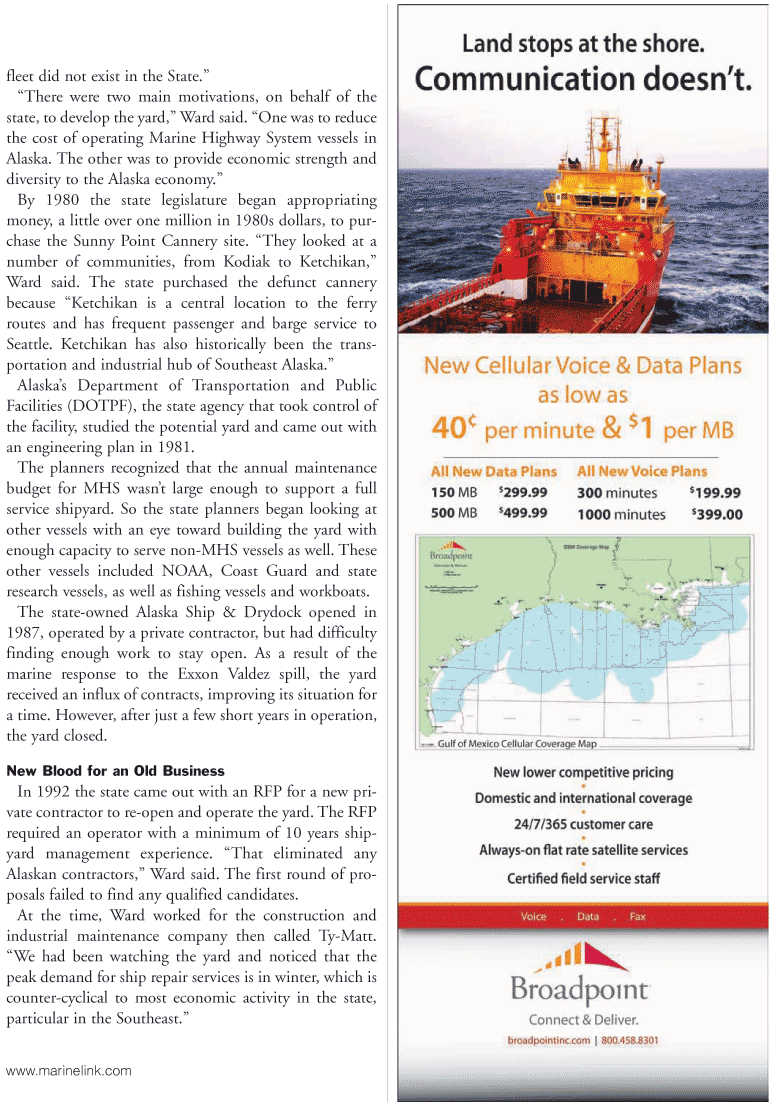
Page 31: of Marine News Magazine (January 2011)
Vessel Construction & Repair
Read this page in Pdf, Flash or Html5 edition of January 2011 Marine News Magazine
www.marinelink.com fleet did not exist in the State.” “There were two main motivations, on behalf of the state, to develop the yard,” Ward said. “One was to reduce the cost of operating Marine Highway System vessels in
Alaska. The other was to provide economic strength and diversity to the Alaska economy.”
By 1980 the state legislature began appropriating money, a little over one million in 1980s dollars, to pur- chase the Sunny Point Cannery site. “They looked at a number of communities, from Kodiak to Ketchikan,”
Ward said. The state purchased the defunct cannery because “Ketchikan is a central location to the ferry routes and has frequent passenger and barge service to
Seattle. Ketchikan has also historically been the trans- portation and industrial hub of Southeast Alaska.”
Alaska’s Department of Transportation and Public
Facilities (DOTPF), the state agency that took control of the facility, studied the potential yard and came out with an engineering plan in 1981.
The planners recognized that the annual maintenance budget for MHS wasn’t large enough to support a full service shipyard. So the state planners began looking at other vessels with an eye toward building the yard with enough capacity to serve non-MHS vessels as well. These other vessels included NOAA, Coast Guard and state research vessels, as well as fishing vessels and workboats.
The state-owned Alaska Ship & Drydock opened in 1987, operated by a private contractor, but had difficulty finding enough work to stay open. As a result of the marine response to the Exxon Valdez spill, the yard received an influx of contracts, improving its situation for a time. However, after just a few short years in operation, the yard closed.
New Blood for an Old Business
In 1992 the state came out with an RFP for a new pri- vate contractor to re-open and operate the yard. The RFP required an operator with a minimum of 10 years ship- yard management experience. “That eliminated any
Alaskan contractors,” Ward said. The first round of pro- posals failed to find any qualified candidates.
At the time, Ward worked for the construction and industrial maintenance company then called Ty-Matt. “We had been watching the yard and noticed that the peak demand for ship repair services is in winter, which is counter-cyclical to most economic activity in the state, particular in the Southeast.”

 30
30

 32
32
